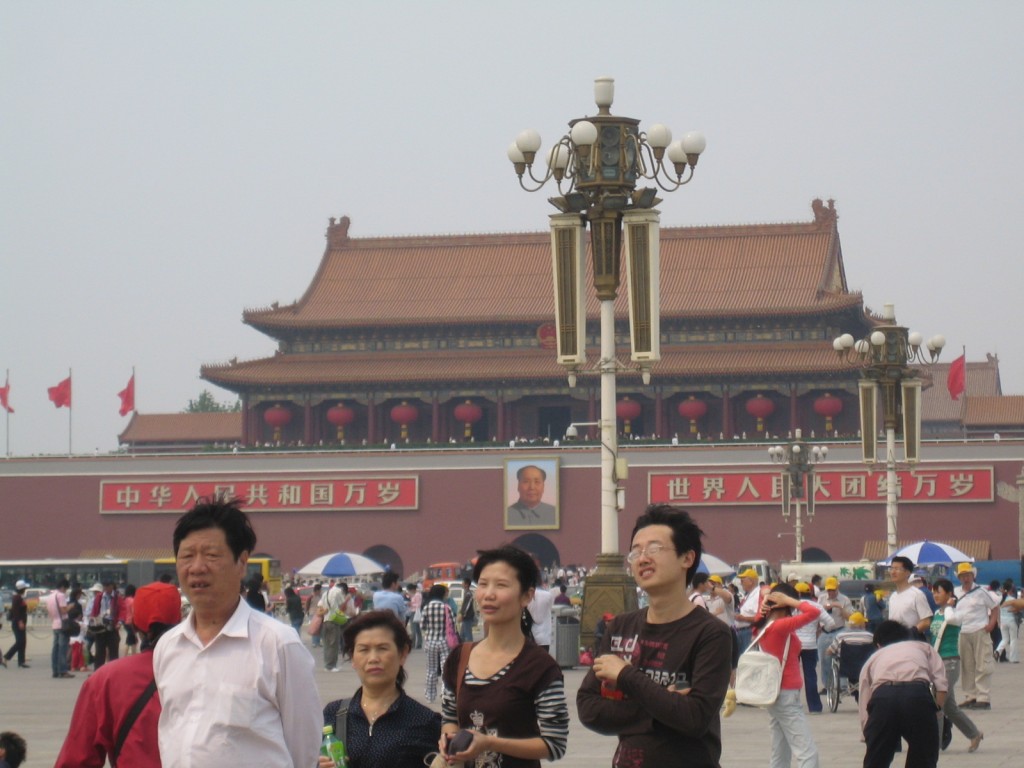Before we actually enter the Forbidden City, it’s important to know that this is not the first Forbidden City in China. It is one of many that existed over the years in places like Xian (where the first Emperor lived), Kaifeng, and Nanjing. In fact, the name Beijing means “northern capital” – just as Nanjing means “southern capital.” Even in Beijing, this is not the first Forbidden City. The Yuan Dynasty which ruled from 1271 or 1279 (depending on which source you trust) to 1368 which preceded the Ming Dynasty had built their own Forbidden City within the city of Beijing. When the Ming Dynasty came into power, they very much wanted to negate the former dynasty in large part because they were not of Chinese origin, but Mongol. The Emperor and others in the Ming Dynasty not only decided to build their own Forbidden City, but they arranged to eclipse the former Forbidden City by constructing a hill in front of it, destroying its Feng Shui and forever remaining ascendant. The name of this hill and the park now surrounding it is Jing Shan and the view from there, looking north, of the former Yuan Forbidden City is most fascinating.
Looking toward the Yuan Dynasty Forbidden City
However, it is also possible, from this hill, to view the Ming Dynasty-built Forbidden City. This is the one that served as home to 24 Emperors, fourteen of the Ming Dynasty and ten of the Qing Dynasty.
Looking south over the Forbidden City
This picture, taken in August of 2007 captures the scaffolding around parts of the Forbidden City. The Forbidden City has been undergoing renovations for many years and each year it is more beautiful. Word has it that the reconstruction may take as long or longer than the original construction that took from 1406 to 1420. The silver dome-like object in the upper right is the brand new Beijing opera house.
After the Qing Dynasty was overthrown in 1911 and the young Emperor, PuYi was forced to abdicate in 1912, the Forbidden City became known as “The Palace Museum” and it houses many of the treasures of the Chinese people.
And now, let’s visit the Forbidden City.
We are lucky. The reason the Forbidden City has its name is that quite simply, if you weren’t invited, you didn’t enter it. Fortunately for us, there are no more Emperors to keep us out and we can enjoy strolling through this awe-inspiring structure.
The Forbidden City is in the center of Beijing which is, according to the Chinese, the center of the world. Hence, China is termed “The Middle Kingdom.” It lies at the crossroads of east/west, north/south. South of the Forbidden City is Tiananmen Square, a huge open plaza, the largest of its kind in the world. It was in front of the square, at Tiananmen Gate on October 1, 1949 that Mao ZeDong proclaimed the People’s Republic of China. His picture still appears on the outside wall of the Forbidden City.
Tiananmen Gate
As with other Chinese structures, the Forbidden City is entered from the south and one proceeds northward through successive gates. Here is another picture of the entrance to the Forbidden City.
Entrance to the Forbidden City
OK, we’re at the threshhold, but you must have patience. Next time, we enter the Forbidden City!




Recent Comments